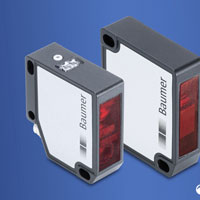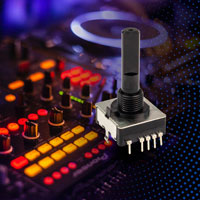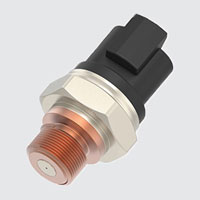Top 5 sensor products in March
Electronic Specifier takes a look at the top sensor products to have been released in March.
1. Sensirion has announced its new calibrated and ISO 17025-certified temperature and humidity sensors. These sensors enable customers to achieve cost-efficient GDP-compliant supply chain monitoring of drugs, vaccines and perishable goods. 
Highly regulated products, such as pharmaceutical or perishable goods, typically require special handling along their distribution chain to comply with several directives. Manufacturers are obligated to cover distribution in their overall quality system and must continuously adapt to adhere to current Good Distribution Practices.
The most regulated parameter is temperature, which determines not only the lifetime, but also the usability of a product. Reliable temperature monitoring in the complexity of a modern logistics network in turn requires trustworthy dataloggers, which are increasingly (pushed by regulations such as EN 12830) accepted only with certification from accredited laboratories (ISO 17025).
“As the first ISO 17025-accredited semiconductor company in the world, we are able to offer customers this disruptive and forward-thinking sensor solution for GDP-compliant datalogging,” said Matthias Scharfe, Product Manager Humidity Sensors at Sensirion.
The STS32 and STS33 are Sensirion’s new high-accuracy ISO 17025-certified digital temperature sensors optimised for cold and frozen chain applications. Both rely on the industry-proven CMOSens Technology, enabling increased computational power, reliability and improved accuracy specifications compared to their predecessors.
Their functionality includes enhanced signal processing, two distinct and user-selectable I2C addresses and communication speeds of up to 1 MHz. The DFN package has a footprint of 2.5x2.5mm2 while keeping a height of 0.9mm.
2. The development of miniature laser distance sensors which provide measurement performance are a vital component in today’s more compact machines and systems, helping manufacturers to meet the ever-present demands for optimum efficiency.
The new miniaturised OM20 and OM30 laser sensors available from BAUMER are a good example being perfectly suited to handling precise measurement tasks, despite their ultra-compact size.
These sensors are distinguished by their ability to provide reliable, surface-independent measurements with a repeat precision of up to 1µm combined with an impressive measurement speed of up to 5 kHz despite their miniature size. They measure just 37x35x13mm.
For applications requiring measurements on structured surfaces such as processed metal or wood, the OM30 option is a suitable solution thanks to its line beam shape with a range of up to 550mm. The standardised IO-Link interface allows for easy integration into control systems along with simple parameterisation of the sensor.
Apart from providing standard process data, such as the distance value or the signal quality, the sensors offer additional data including the measurement rate and the illumination reserve of the sensor. The latter can also be used as an indicator for the soiling of the sensor, helping to support preventative maintenance regimes.
The precise and reliable performance characteristics of these new miniature sensors apply across the entire Baumer OM sensor range giving users the confidence of unrivalled measurement, compared to other options available.
3. Paragraf has announced a new graphene Hall Effect sensor suited to battery applications, such as the Electric Vehicle (EV) sector. The graphene GHS01AT Hall Effect sensor is optimised for use in relatively low field environments and normal ambient temperatures.
Bringing the magnetic field measurement resolution towards that of more complex magnetic sensors, yet with the small size and ease of use of a Hall sensor, it can address monitoring tasks that conventional technologies simply cannot provide an effective solution for.

The Bourns Model PAC18R Series is RoHS compliant and is available now.
5. To serve an increased demand among design engineers in the industrial and commercial transportation (ICT) and industrial space for reliable sensors and components that improve operational efficiency in hydraulic machinery and compressed gas applications, TE Connectivity (TE), has developed the M9100 pressure transducer.
Based on TE’s Microfused strain gauge technology, M9100 pressure transducer can operate in extreme conditions at pressures up to 700 bar.
With its simple and innovative snubber design, M9100 pressure transducer is available with standard configurations, provides durability against pressure spikes and is less prone to errors and maintenance.

With its simple and innovative snubber design, M9100 pressure transducer is available with standard configurations, provides durability against pressure spikes and is less prone to errors and maintenance.
The robust package allows for reliable sensor operation while submerged in water.
The M9100 pressure transducer has an excellent EMI/EMC performance, according to ISO 11552. It can withstand nearby electrical noise and be installed next to EMI emitting components. Furthermore, a high level of electrical protection to the power supply makes the M9100 pressure transducer more robust to poor power supply control and reduces the risk of system issues.
Finally, with a 27 mm hex and considerably compact height (down to 50 mm), the M9100 pressure transducer is fitted for large, durable connection systems like TE’s DEUTSCH DT connector series.


